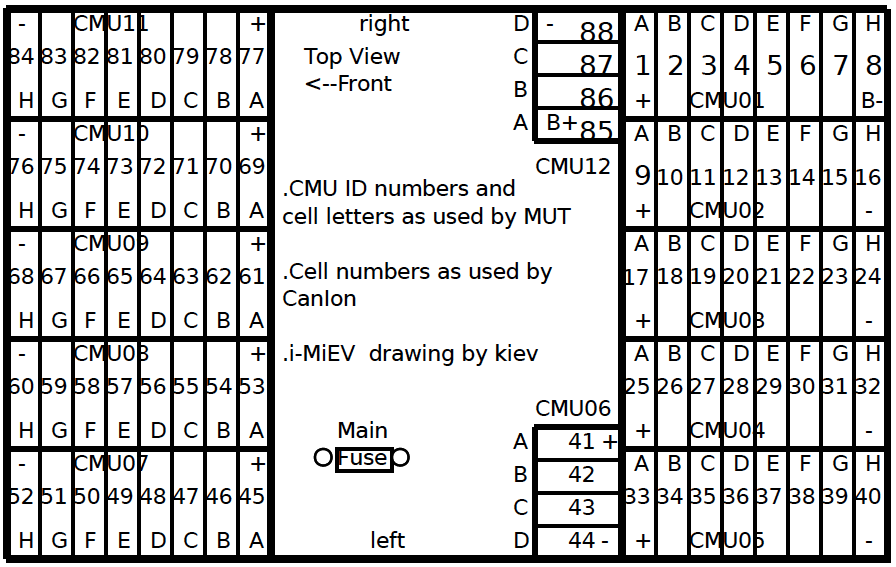doanabogdan
Member
- Joined
- Mar 10, 2018
- Messages
- 13
http://myimiev.com/forum/viewtopic.php?f=23&t=3897

JoeS said:Tinoale, glad the problem has gone away (at least, for the time being).
Very disconcerting about the dramatic loss in range - especially with the heater OFF. More confusing is the slow drop on the evening return trip. And, they average out to normal for the round trip?
From my perspective, your video did not demonstrate an unusual situation, as the the bars hop around as the car discharges and is no longer sitting at 100%SoC. I would be tempted to simply plug the car in and let it fully fully charge up and go through the balancing cycle, perhaps a couple of times.
At this point in time, there could be many sources of the problem and your speculations are but some of the ideas. I would simply continue using the car normally until it starts to repeatedly demonstrate something - for this, CaniOn is invaluable.
Sorry, I can't offer any concrete suggestions.
tinoale said:...Loosing the SOC entirely with no anomaly on the cells voltage readings makes me think something else (something more ?) is faulty.
What if it was the CMU master component (the one that stores the VIN and communicates with the BMU ) that was failing since the beginning ? could it explain both the previous behavior as well as the new one ?





I've been reading the CMU firmware. It's hard going for me, but there is definitely a mechanism for "numbering" the CMUs. In fact, it seems to me that this happens automatically any time that there is a certain type of error (I can't be certain about what type of error, and it was some time ago I that I found this). But I have no idea how to trigger this process if needed. [ Edit: It's possible that the CMUs will detect say two CMU 5s and/or no CMU 10, and that this mismatch will automatically trigger the renumbering process. It has to originate from the BMU. ]tinoale said:The repair guy says that if we're going to swap the CMU_10 board we need to source a used CMU_10 board (not another number).
Oh, I forgot to mention that as far as I know, the ID resides in RAM. If so, all the 8-cell CMU boards would be the same, and you'll need it anyway. But there might be somewhere it reads that ID from, that I haven't noticed.tinoale said:But I have found a CMU 10 board set (board, wiring and space board) of eBay though so apparently I won’t need this auto numbering function.
I've not noticed anything [ edit: in the CMU firmware ] that I have associated with VIN numbers, but there are plenty of things I don't understand, one of which could be a VIN number. Others may have more direct information, like "I tried it and it didn't work till the dealer did some magic".Have you any info about the CMU board being VIN programmed ?

tinoale said:I do not know, as of now, where is this board physically located. Any pointer to this information would be greatly appreciated.